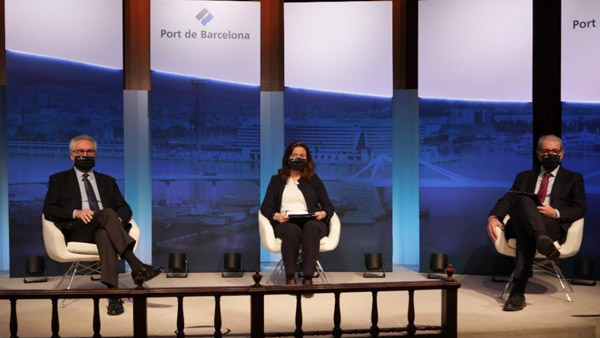Finding new logistics ground through public-private collaboration that allows the ZAL Port to grow is essential to gain competitiveness.
On January 13, the Port of Barcelona presented its IV Strategic Plan 2021-2025, establishing as its first mission the generation of well-being and prosperity for citizens, thus consolidating the social and sustainable commitment that this infrastructure has been taking in recent years.
“SMART logistics hub. The SMARTest logistic hub in the MED” is the vision defined in this Strategic Plan. A vision that implies actions that must be taken to achieve it, such as differentiating the supply of services and activity and promoting new logistics land in the ZAL Port. “Logistics is a differential fact of the Port of Barcelona that adds value to the merchandise and occupation. For this reason, the ZAL Port has to continue growing by using the spaces available near the Port ”, indicated José Alberto Carbonell, general manager of the Port of Barcelona.
The Strategic Plan, a result of a participatory process in which the entire Port Community of Barcelona has been involved, has three fundamental aspects: environmental sustainability (energy transition), economic sustainability (competitiveness) and social sustainability (human capital).
The ZAL Port, a key element for economic sustainability
To gain competitiveness, the Port must diversify the port business and differentiate the service offer based on innovation and digitization, and at the same time it must attract new logistics activity. The ZAL Port is a reference platform that currently has 97% of its land occupied. A success that hinders its growth. For this reason, the Plan identifies as necessary to find new logistics ground through public-private collaboration.
Mercè Conesa, president of the Port of Barcelona, indicated that the Port has “the obligation to maintain and increase the GDP of Catalonia despite the economic crisis” that has caused the Covid-19 pandemic. The infrastructure currently represents 1.7% of wealth, and this percentage rises to 7% if the logistics ecosystem is added. Consequently, having more space for these companies is an urgent need and one of the key points of the Strategic Plan.
 [+34] 93 552 58 26
[+34] 93 552 58 26 sac@zalport.com
sac@zalport.com Av. Ports d'Europa 100, Planta 0, 08040. Barcelona
Av. Ports d'Europa 100, Planta 0, 08040. Barcelona






